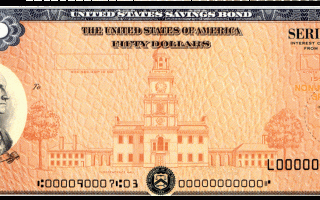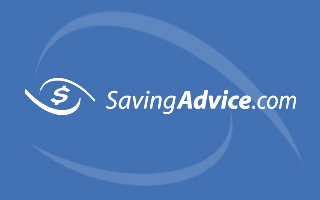
We used to have such limited options when it came to getting a good interest rate from a savings account. Most banks today still offer very minimal rewards on their basic savings accounts. In the past, if you wanted to make money off of your money, then you really needed to invest it rather than just stowing it in a savings account. While it’s still true that you make more money off of investments, your options are getting increasingly better if you do want to use savings accounts.
What Is a High Yield Savings Account?
Put simply, a high yield savings account is the same as your regular savings account except that you’re able to earn more money from it.
According to the FDIC, the average interest rate on savings accounts is .10% APY. In other words, if you deposit $1000 in a savings account, then over the year you will earn $1. That’s not very much of a return on your investment.
Of course, savings accounts aren’t really supposed to be investment tools. They’re places that you can park your money and still easily access it as needed. Traditionally, you would need to put your money into a money market account or CD if you wanted to get a higher interest rate. However, you can’t pull your money out of those types of accounts so easily.
A high yield savings account, on the other hand, gives you the benefits of a savings account with a higher rate of return. You can easily earn ten times the interest rate of a regular savings account if you use a high yield savings account. The APY on a high yield savings account exceeds 1%. Therefore, you’ll get more than $10 per year on every $1000 that you deposit, compared to that $1 in your traditional savings account.
Wealthfront High Yield Savings Account
Wealthfront is one of the best options for people seeking to open a high yield savings account for the first time. That’s because it offers the highest overall rates. They recently raised their rate to 2.57%. That means you’ll earn more than $25 per year on every $1000 that you deposit into the Wealthfront high yield savings account. Why would you put your money in the bank and earn $1 per year when you could put it in a different bank and earn $25 per year instead?
Get your FREE trial of Simplifi by Quicken. You work hard for your money. Now let’s make it work hard for you.
Wealthfront Offers Double the Interest Rate of a 60-Month CD
If you take a look at the FDIC rate chart linked above, you’ll see that you can get higher interest rates by putting your money into longer-term CDs. For example, you can get 0.65% APY on average for 12-month CDs. If you put your money into a 60-month CD, then you can get as much as 1.25% APY.
However, that means that you can’t touch your money for five years without penalty. Moreover, you still only get $12.50 per $1000 deposited. In contrast, you can get twice that with a Wealthfront high yield savings account and your money isn’t tied up at all. Of course, the longer you keep the money in there (and the more you add to the account), the more money you’ll earn. Nevertheless, it’s comforting to know that if you have to pull that money out for an emergency, you’re not going to incur a fee.
You Can Start a Wealthfront High Yield Savings Account with Just $1
Generally speaking, the more money that you put into an account, the more likely you’ll get a good interest rate in return. The FDIC breaks savings accounts into two categories: normal and jumbo. The latter means that you put at least $100,000 into the account. You usually make more money in interest on jumbo accounts than you do on normal accounts.
In fact, many of the companies that offer high yield savings accounts require you to open a jumbo account. If you don’t have $100,000 (or whatever minimum they require), then you’re out of luck as far as those good rates go. That’s not the case with Wealthfront. Wealthfront allows you to open a high yield savings account with just $1. You can start earning your 2.57% APY right away on whatever amount you’re able to deposit.
This can serve as a great opportunity for people who are new to high yield savings accounts to check out how it works. You don’t pay a fee, you don’t have to put in a minimum amount of money, and you can start earning those high interest rates. As you see your money start to grow, it might inspire you to stick more and more into savings. As you do, you’ll earn more. It’s a win-win cycle.
There Are No Fees
It’s important to reiterate that there are no fees for this account. You don’t pay a fee to open the account. You don’t pay a fee if you fail to keep a minimum amount in the account. Moreover, you can transfer your money in and out of the account as often as you want and there won’t be any fees for that either.
Of course, come tax time, you do need to pay taxes on the interest you earn. But that’s true of any interest earnings from any bank.
What is Wealthfront?
Wealthfront is an online-only bank. Actually, technically, they’re a fintech company. One of the reasons that they’re able to offer such great rates is that they don’t have the high overhead costs of running an in-person bank.
So where does your money go? You actually place your money in a partner bank, such as Citi Bank. The reason this matters is because those banks have FDIC insurance. It’s FDIC insured up to $1 million. In other words, your money is safe with Wealthfront, even though it’s an online-only bank because they partner with brick-and-mortar banks.
If you’ve heard of Wealthfront in the past, it might be because they’re known as a terrific app-based investment tool. They offer a robo-advisor with low fees to help you begin investing. You do not have to use their investing tools in order to benefit from opening a high yield savings account with them. That said, as you get more and more used to this bank, you might discover that you do want to take advantage of all that they have to offer.
Read More:
- These 13 Apps and Services Allow You to Save (and Earn) Real Money
- Detailed American Express Savings Account Review
- Ally Savings Account Review: Better Than American Express?
Kathryn Vercillo is a professional writer who loves to live a balanced life. She appreciates a good work-life balance. She enjoys balance in her relationships and has worked hard to learn how to balance her finances to allow for a balanced life overall. Although she’s only blonde some of the time, she’s always striving for total balance. She’s excited to share what she’s learned with you and to discover more together along the way.






Comments